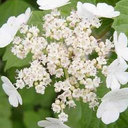Lotus Leaf Aqueous Extract Reduces Visceral Fat Mass and Ameliorates Insulin Resistance in HFD-Induced Obese Rats by Regulating PPARγ2 Expression.
Keywords
Abstract
Objectives: Lotus leaf is a kind of traditional Chinese medicine. We aimed to explore the effects of lotus leaf aqueous extract (LLAE) on peroxisome proliferative activated receptor γ2 (PPARγ2) expression in preadipocytes and adipocytes and further investigate its effects on high fat diet (HFD)-induced obese rats. Methods: pGL3-Enhancer-PPARγ2 (625 bp)-Luc plasmid, a luciferase reporter gene expression plasmid containing PPARγ2 promoter, was stably transfected into 3T3-L1 preadipocytes. PPARγ2 promoter activities were determined by assaying the luciferase activities. Then PPARγ2 promoter activities in preadipocytes and PPARγ2 mRNA levels in human subcutaneous adipocytes were measured after the administration with LLAE. Additionally, the effects of LLAE on body weight, fat mass, glucose and lipid metabolism and the expression of PPARγ2, insulin receptor substrate 1 and glucose transporter 4 (GLUT4) in visceral adipose tissue (VAT) were measured in HFD-induced obese rats treated with low or high dose [0.5 or 3.0 g crude drug/(kg.d)] LLAE for 6 weeks. Results: Ten μg/ml LLAE significantly increased the luciferase activities in 3T3-L1 cells and the stimulatory action reached 2.51 folds of controls when LLAE was 1000 μg/ml (P < 0.01). After treating 3T3-L1 cells with 100 μg/ml LLAE, the stimulatory role peaked at 32 h where it was 2.58 folds of controls (P < 0.01). Besides, 100 μg/ml LLAE significantly increased PPARγ2 mRNA levels in human adipocytes to 1.91 folds of controls (P < 0.01). In HFD-induced obese rats, administration with both low and high dose LLAE notably reduced visceral fat mass by 45.5 and 58.4%, respectively, and significantly decreased fasting serum insulin levels (P < 0.05). The high dose LLAE also significantly decreased homeostasis model assessment of insulin resistance in obese rats (P < 0.05). Furthermore, the mRNA levels of PPARγ2 and GLUT4 in VAT of obese rats were significantly increased when compared with control rats, and were notably suppressed by LLAE intervention for 6 weeks (P < 0.05). Conclusion: LLAE significantly reduces visceral fat mass and ameliorates insulin resistance in HFD-induced obese rats. These beneficial effects of LLAE may associate with its role in stimulating PPARγ2 expression in preadipocytes and subcutaneous adipocytes and suppressing PPARγ2 and GLUT4 expression in VAT.



